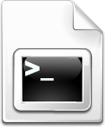If you ever need an IPAM and/or DCIM tool this one is highly recommended. It allows modeling all your infra including network, datacenter and virtualization using a web gui and has an extensive REST API. It can be extended by plugins and "custom fields".
Today it’s widely used and there’s plenty of docs, examples and integrations available.
Installation
The tool is build on Python/Django and uses PostgreSQL. LDAP and other auth methods can be configured. Manual installation includes installing required packages, db and http server. Upgrading to latest version is supported. There’s also Ansible playbooks available for deploying (3rd party).
Objects
There’s Sites, Racks, Devices, Virtualization, VLAN and Interfaces. VM’s and Devices are seen separately and have their own API calls, which might be something to be aware of.
Racks
Devices can be put in racks and have Connections using Cables connecting Interfaces. Same goes for Power, Console, Storage etc.
IPAM
For IPAM there’s Prefixes, IP’s (4 and 6), VLANs, VRF’s and VC’s.
Importing data
Can be done in bulk with e.g. CSV or using the API. If you’re migrating from RackTables there’s ‘racktables2netbox’ but be aware it’s not updated and not directly usable in it’s current state (e.g. API’s changed). It uses ‘pynetbox’, a client lib you can also use for own scripts.
Links
RFC1918 (IPv4)
- 10.0.0.0 – 10.255.255.255 (10/8 prefix)
- 172.16.0.0 – 172.31.255.255 (172.16/12 prefix)
- 192.168.0.0 – 192.168.255.255 (192.168/16 prefix)
https://tools.ietf.org/html/rfc1918
https://www.iana.org/assignments/ipv4-address-space/ipv4-address-space.xml
RFC1918 (IPv6)
- fd00::/8
Uncompressed:
fd00:0000:0000:0000:0000:0000:0000:0000
Range start-end:
fd00:0000:0000:0000:0000:0000:0000:0000
fdff:ffff:ffff:ffff:ffff:ffff:ffff:ffff
https://tools.ietf.org/html/rfc4193
https://tools.ietf.org/html/draft-delong-ula-example-00
https://www.iana.org/assignments/ipv6-address-space/ipv6-address-space.xml
nftables (nft) replaces iptables:
- Debian (10 buster) links ‘iptables’ to ‘iptables-nft’ and ‘iptables-legacy’ is actually ‘iptables’
- RH uses nft as as preferred firewall since RHEL8 and firewalld uses nft as backend
If you haven’t switched yet you might want to ‘translate’ your current iptables rules and make other programs use nft.
config
rules are located in:
- Debian
/etc/nftables.conf - RedHat
/etc/sysconfig/nftables.conf
list
nft list ruleset
nft list chain ip filter INPUT
nft list tables
nft list table ip filter
flush
nft flush ruleset
translate
iptables-restore-translate -f /etc/iptables/rules.v4 > /etc/iptables/ruleset.nft
ip6tables-restore-translate -f /etc/iptables/rules.v6 > /etc/iptables/ruleset6.nft
netfilter-persistent
Oddly enough the only place I could find a nft plugin was here
curl https://raw.githubusercontent.com/hardenedlinux/harbian-audit/master/docs/configurations/usr.share.netfilter-persistent.plugins.d.15-nft -o /usr/share/netfilter-persistent/plugins.d/15-nft
fail2ban
Make f2b use nft. From https://wiki.meurisse.org/wiki/Fail2Ban:
-
edit ‘/etc/fail2ban/jail.local.conf’:
banaction = nftables-multiport -
add to ‘/etc/nftables.conf’:
include "/etc/fail2ban.conf" -
create ‘/etc/fail2ban.conf’:
#!/usr/sbin/nft -f
# Use ip as fail2ban doesn't support ipv6 yet
table ip fail2ban {
chain input {
# Assign a high priority to reject as fast as possible and avoid more complex rule evaluation
type filter hook input priority 100;
}
}
How to create a 6to4 tunnel in Windows using CLI (for use with HE’s free Tunnel Broker service for example).
netsh interface teredo set state disabled netsh interface ipv6 add v6v4tunnel TunnelNamenetsh interface ipv6 add address TunnelName 2001:a:b:c::2 netsh interface ipv6 add route ::/0 TunnelName 2001:a:b:c::1
Where:
- “2001:a:b:c::” is your prefix
- “2001:a:b:c::1” is the gateway
- “2001:a:b:c::2” is your ipv6 address
Delete the tunnel:
netsh interface ipv6 delete address TunnelName 2001:a:b:c::2 netsh interface ipv6 delete route ::/0 TunnelName 2001:a:b:c::1 netsh interface ipv6 delete interface TunnelName
A HE tunnel can be requested here: https://tunnelbroker.net.
Documentation
Linux Advanced Routing & TC: http://lartc.org/howto/index.html
Basic commands
I guess ifconfig is deprecated now…
Help:
ip a help
( a=address l=link r=route )
Show:
ip a show eth0
ip l show eth0
ip r get 8.8.8.8
( use ip -4 or -6 for ipv4/6 )
Change:
ip l set dev eth0 up
ip a add 192.168.1.2/24 dev eth0
.
Two Default Gateways
Useful to setup for hosts on multiple subnets/networks.
Howto’s:
- https://www.thomas-krenn.com/en/wiki/Two_Default_Gateways_on_One_System
- http://www.rjsystems.nl/en/2100-adv-routing.php
- https://kindlund.wordpress.com/2007/11/19/configuring-multiple-default-routes-in-linux/
- http://www.dfwavc.com/linux_multi_nic-multi_gateway
Instructions
Add table:
echo -e "10\trt2" >> /etc/iproute2/rt_tables
Add route/rule:
ip route add 1.2.3.0/20 dev eth1 src 1.2.3.172 table rt2 ip route add default via 1.2.3.1 dev eth1 table rt2 ip rule add from 1.2.3.172/32 table rt2 ip rule add to 1.2.3.172/32 table rt2 ip rule add from 1.2.3.173/32 table rt2 ip rule add to 1.2.3.173/32 table rt2 ip route flush cache ip route list table rt2 ip route show ip rule show
Testing:
ping -I 1.2.3.172 8.8.8.8
Making it permanent
debian:
/etc/interfaces
/etc/network/interfaces.d/eth1
post-up ip route add 1.2.3.0/20 dev eth1 src 1.2.3.174 table rt2
post-up ip route add default via 1.2.3.1 dev eth1 table rt2
post-up ip rule add from 1.2.3.174/32 table rt2
post-up ip rule add to 1.2.3.174/32 table rt2
/etc/network/interfaces.d/eth1:0
post-up ip rule add from 1.2.3.176/32 table rt2
post-up ip rule add to 1.2.3.176/32 table rt2
redhat:
echo "1.2.3.0/20 dev eth1 src 1.2.3.172 table rt2" >> /etc/sysconfig/network-scripts/route-eth1
echo "default via 1.2.3.1 dev eth1 table rt2" >> /etc/sysconfig/network-scripts/route-eth1
echo "from 1.2.3.172/32 table rt2" >> /etc/sysconfig/network-scripts/rule-eth1
echo "to 1.2.3.172/32 table rt2" >> /etc/sysconfig/network-scripts/rule-eth1
echo "from 1.2.3.173/32 table rt2" >> /etc/sysconfig/network-scripts/rule-eth1
echo "to 1.2.3.173/32 table rt2" >> /etc/sysconfig/network-scripts/rule-eth
Useful websites:
http://www.firewall.cx
https://www.gns3.com
Commands:
show int status (which port, vlan) show vlan (on switch)
show int des (all descriptions)
show ip int brief (all ip interfaces)
show hard (hardware)
show ver (version)
show environment
show ? (all show cmds)
show cdp (neighbours)
show lacp
show int p0 (port/channel)
port-c
show users
show utp status (trans/client)

You must be logged in to post a comment.